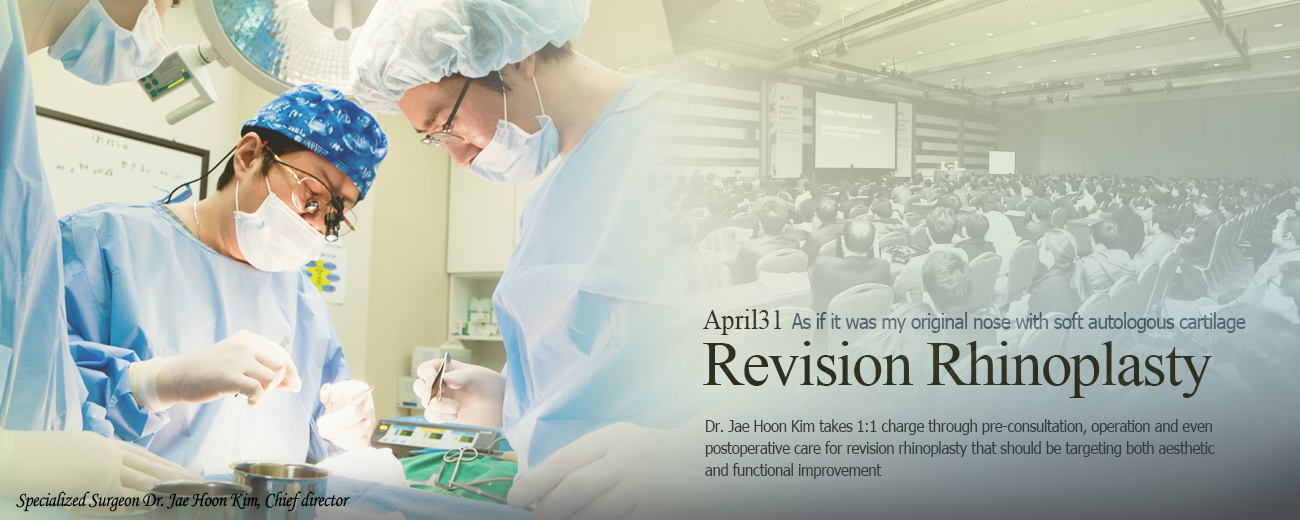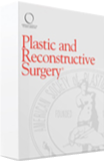
◆ Surgical information
Specialized Surgeon Dr. Jae Hoon Kim, Chief director Anesthesia : IV Sedation + Local Anesthesia Post operative treatment visits: do 3-4 times Stitch removal : 5-7 days after Recovery Care : Bruising and swelling care |
◆ What is Revision Rhinoplasty?
Revision rate for rhinoplasty is relatively high among all plastic surgery. Rhinoplasty result is highly dependent on the aesthetic sense and surgical method of the performing surgeon. The result may look fine at the beginning but there are many cases with secondary problems such as contracture (upturned nose) or excessive movement of the implant as time goes.
Revision Rhinoplasty of April31 PS is performed by Dr. Jae Hoon Kim who will correct the cause of revision and give both aesthetic and functional satisfaction.
|
Every Revision Rhinoplasty of April31 PS is performed by Dr. Jae Hoon Kim Revision Rhinoplasty of April31 PS is performed by Dr. Jae Hoon Kim who will correct the cause of revision and give both aesthetic and functional satisfaction. - President of Association of Korean Rhinoplasty Sugeons (2010-2012) - Former Professor at Medical College, Soonchunhyang university - Former Executive director of the Korean Association of Clinical plastic surgeons - President of SRF 2012 The 1st International Seoul Rhinoplasty Forum - Forver Executive director of The Korean Society for Aesthetic Plastic Surgery Dr. Jae Hoon Kim's revision operation video is registered in official international surgery text book. Peter C. Neligan 'Plastic surgery' |
|||
|
◆ FAQ.
It will eventually become an upturned nose some time after a revision rhinoplasty?
"April31 PS Revision Rhinoplasty gives complete cartilage fixation, so no need to worry about tip going back up."
Tip plasty using rib cartilage |
When revision rhinoplasty is performed to correct contracture (upturned nose), the nasal tip will go back up as time passes if what's done is just lowering the tip using autologous cartilage. April31 PS Dynamic Tip Plasty not only lowers the tip using autologous cartilage, but also completely fixes it on the alar cartilage which prevents contracture and makes the nasal tip softer. In case of shortage in septal or conchal cartilages due to repetitive revisions, rib cartilage can be used to augment the bridge and lengthen the nasal tip. In case of revision rhinoplasty using rib cartilage, it is recommended to have a thorough consultation with a specialized surgeon with plenty of experience in revision cases. |
Suitable Surgical Methods Based on the Causes
◆ Revision Required Cases and Surgical Methods
| |
Deviated Dorsum (Bridge) - Cause The implant insertion site is created unevenly or unaccordingly to the bridge shape. - Correction Make even space on each side for implant insertion
| Moving Implant - Cause Slight movement of the implant is possible after rhinoplasty but excessive movement means the implant isn't fixed accurately. - Correction Accurate insertion and fixation of the implant under the periosteum.
|
| |
Implant Transparency - Cause Originally thin skin or thinned skin after the surgery. Supplementing thin skin should be done. - Correction Wrapping the implant with deep temporal fascia, or giving the bridge augmentation only with autologous dermis or cartilage in severe cases.
| Excessively low or high bridge - Cause Wrongly designed implant without considering the facial balance. - Correction Can be simply corrected by re-designing the implant according to overall face ratio.
|
| |
Demarcation of the implant on sides - Cause Implant not matching the bone surface or thinned skin. - Correction If it's the case of unmatching implant, re-carve the implant according to the bone surface with smoother sides then re-insert it. If it's the case of thinned skin, reinforcing the thinned skin can correct it.
| Stiff and immobile tip - Cause Implant being inserted all the way down to the nasal tip. It may cause contracture (upturned nose). - Correction
The length of the implant should be re-designed
before the tip becomes red. The upturned tip should be lowered with Dynamic Tip
Plasty. |
◆ Treatment Plan

01. Examine the nose condition, bone structure and soft tissue through 3D CT scanning |
02. Consult with Rhinoplasty Specialist Dr. Jae Hoon Kim |
03. Devise a surgery plan suitable for each patient |
04. Perform surgery and monitor recovery |






